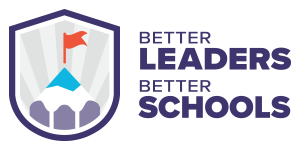
A common thread in education, no matter the state, location, or student, is that success depends upon leadership. Yet unfortunately just as common, is lack of a quality assessment.
Often leaders I encounter will express that if they are evaluated at all, it’s a formality, and rarely leads to improvement. Such is the case for most teachers, so it is not surprising the same holds true for principals.
What to Observe?
“If your actions inspire others to dream more, learn more, do more and become more, you are a leader.”
-John Quincy Adams
Effective evaluations must include a focus on areas that consume the administrators responsibility, measures progress or a lack thereof for each, and offers goals for future school success.
Such areas MUST include:
- Instructional Leadership
- Family & Community Engagement
- A Safe Learning Environment
- Organization of Systems in Place
- Communication
Any other category, is subjective.
Student Learning is Always a Focus…
A Principal should always be connected to external policy especially when it pertains directly to their site, but to hold them accountable for that when the focus on the above 5 points is instrumental to daily school successes just seems like a waste of time.
“Leadership and learning are indispensable to each other.”
-John F. Kennedy
The first topic is simple, all teaching and learning fall under this umbrella. However, how does the principal evaluate teaching and learning? Is growth evident, aligned to improvement plans, and serve as true supportive effort to enhance learning?
Such should be the same for the principal!
With transparent understanding of the quality of performance, and mandatory implementation of said process which supports growth and performance evident in a rubric, meaningful change of a process is possible.
Surveys create evidence to document climate and culture data. Everything from engagement to the learning environment provides principals with measures of essential areas that may need to improve.
How safe and welcomed everyone feels, from parents, students, to guests, to employees, and stakeholders, developing a culture that embraces all parties and provides professional development to implement change is a crucial component of the position.
The principal evaluation through the lens of the district, should factor the above as most crucial. Within the Better Leaders Better Schools network, we focus on this with intent.
Is the practice of quality instruction evident in classrooms, and are educators supported with materials and resources necessary to act in the best interest of the needs of the students?
Do observations show that the administrator is effectively promoting teacher growth? Student achievement is extremely high on the list of what evaluation systems must include.
School Leadership Communication
Student learning is within the foundation of a principal evaluation, this is for certain.
Even when principals are able to conduct a self evaluation in the absence of the school district or department of education, academic performance is on top of their rubric.
However, the practices of professionalism within communication efforts, whether with:
- students,
- educators,
- administrators,
- parents,
- or to the community,
it is essential to measure this necessary skill on a principal performance evaluation.
When they visit assemblies unannounced, are they a figure of leadership that promotes a proper example? When they speak to parents that are emotional driven, can they deescalate?
When they speak to students in crucial moments, sending emails to the entire community, or working with teachers – can they maintain an element of professionalism that is contagious?
School Leaders and Organization
“The pessimist complains about the wind. The optimist expects it to change. The leader adjusts the sails.”
-John Maxwell
An evaluation system must include a section of a rubric that surveys growth around organization. Evaluators need to keep in mind, that principals must be both leaders and managers.
The difference, is managers think they’re doing the job successfully because systems are in place.
This is absolutely true!
In New York City to date, as well as in California, organization of systems in place are evident in state accepted universal norms for principal evaluations. Standards are in place to monitor this crucial aspect of the job, and allows for innovation to act as the driving force even though it’s not teaching and learning.
Based on the implementation of department run fluency throughout the school year it is obvious to notice efficacy or lack thereof, within a principal’s regular practices.
Is money managed correctly? I’ve heard principals announce that they’ve run out of money and can’t provide school aides to monitor halls – and watched the incidents climb.
School districts want to see that each department has an evaluation that the principals monitor, assistant principals influence, and together as a staff teams are supported and lead to find successes in their tasks and responsibilities.
Schools are only successful when holistically they are running smoothly. Consider the following questions to assess the importance of this point:
- What would happen if the custodian’s office manager forgets to order paper products for your restrooms?
- What happens when a testing window is missed? Even worse, how about a compliance window?
- If a report based on state standards is due by department on statistics of performance, how smooth is the operation coordinated?
- When new systems or mandates need to be rolled out, how well is that information received?
- To date, what evidence of camaraderie exists amongst faculty and staff during the year making the site a great school to work in?
The evaluation system standards, must be based on how to improve aspects of organization, instruction, and communication, however, the data must be used to inform a process of growth, or it will be looked at as most other evaluation systems – one that ends in the product.
Dear Department of Education, please take note of the following statement:
Don’t evaluate if all you want is the end result!
If you are a superintendent and your evaluation system rates your principal negatively, what are you going to do to support them?
If you fire them – you are part of that problem. If you shuffle them – you are the problem.
As a district administrator, how are you supporting your principals? The best way, would be to report on elements of the above in your evaluation system, to your principals and assistant principals, on how you can support the trends within the data that are evident.
A principal’s evaluation informs the process, like any evaluation should.
This is When School Districts Benefit Most…
“The single biggest way to impact an organization is to focus on leadership development.
-John Maxwell
No matter if it is for teachers, principals, or those that lead in districts, an evaluation must report on resources that improve instructional, behavioral, or organizational practice.
However, without a safe learning environment, any administrator evaluated in education will only be so successful.
The foundation for learning, begins with a safe environment to do so. Walk in to any successful school, and you will notice this immediately. Leadership and instruction benefit due to this. Therefore as does the student.
School leadership teams focus on the culture of their sites almost more than anything. How does an evaluation measure this? What resources could be provided to principals, and teachers, so that all schools and every student can thrive?
For assistant principals, this is often a major component of their job that is over looked. For principals, it is necessary in order to create an ideal culture that to make this a team effort.
Teachers do this daily in their classroom. A principal may do this daily yet in their main office. Assistant principals must attempt to foster safe learning environments in every aspect of the job.
How this is captured in the evaluators report could determine how resources are available.
Transparency is Key…
“A good objective of leadership is to help those who are doing poorly to do well and to help those who are doing well to do even better.”
-Jim Rohn
Any evaluation must provide clear expectations.
Any report can be useful data and filled with resources. Yet if no obvious measurement includes exemplary standards, what makes for a successful principal?
Teachers know what is necessary to gain the green stamp on their evaluation. Districts are for the most part – pretty good about this. A principal evaluation, sometimes does not.
Expectations must be reasonable while idealistic. Resources that districts provide must ensure growth so schools improve. Doing this with a transparent teacher evaluation defined by what is success and what is failure, sometimes evident on a rubric, make this possible.
A principal evaluation that doesn’t use a rubric always confused me. Districts may do this so the ability to rate is ever present. This could mean the ability to move principals using an evaluation system enables that.
However, when principals know what to reach for, they often go for it. If standards provide a bar, and districts demand that education should be evaluated to show mastery at greater levels – they simply do not show clear measurements as to how this is achieved.
A Principal evaluation must be as transparent ever with what evaluators are looking for, otherwise resources could be fantastic and totally misused. With having higher standards must come clarity with mastery levels, this way your resources will work more effectively.
In education, imagine if the standards for getting an “A” revolved around really liking the work completed. No rhyme or reason as to why, but it really seems awesome.
If your principal evaluation does not include the mandatory components above, and does not include transparency, you are not helping any principal improve, districts are able to “shuffle” instead of improve, and education can suffer tremendously.
How can this change?
You can level up your performance or provide your own standards for what excellence in leadership means to you or your districts, by taking part in The Ruckus Maker Mastermind™, which offers weekly coaching and mentorship, so you can determine a path towards personal and professional development!
Learn more at betterleadersbetterschools.com/mastermind NOW!!!!!!
Frequently Asked Questions
1. What are principals evaluated on?
Principals are typically evaluated based on a combination of factors that encompass leadership, school management, academic results, school culture, stakeholder relationships, and continuous professional development. These may include student achievement and progress, implementation of curriculum standards, teacher professional development, student and staff attendance, parent engagement, and the principal’s ability to set a vision and create a positive learning environment.
2. How do you evaluate a school administrator?
Evaluating a school administrator involves assessing both tangible outcomes and qualitative aspects of their leadership. Tools might include:
- Performance evaluations based on set criteria or rubrics.
- Surveys and feedback from teachers, staff, students, and parents.
- Data on student performance, attendance, and discipline.
- Observations of administrative meetings, school events, and daily operations.
- The administrator’s self-evaluation and personal development plan.
3. What are the qualities of a good principal?
A good principal typically exhibits the following qualities:
- Visionary leadership: Setting a clear and inspiring direction for the school.
- Effective communication: Listening to others and conveying ideas clearly.
- Strong decision-making and problem-solving skills.
- Empathy and understanding towards students, staff, and parents.
- Commitment to continuous learning and professional development.
- Ability to build and maintain positive school culture.
- Integrity and ethical behavior.
- Collaborative mindset, fostering teamwork and community engagement.
4. How do principals evaluate teachers?
Principals evaluate teachers through a variety of methods:
- Classroom observations to assess instructional practices and classroom management.
- Review of lesson plans and instructional materials.
- Analysis of student achievement data.
- Feedback from students, through surveys or informal discussions.
- Teacher self-evaluations and reflections.
- Participation in professional development and willingness to collaborate with colleagues.


